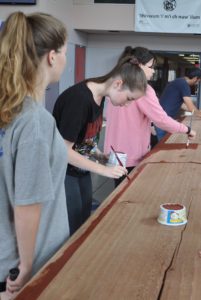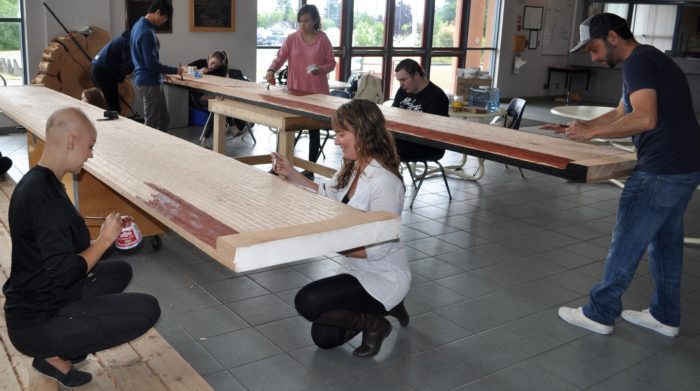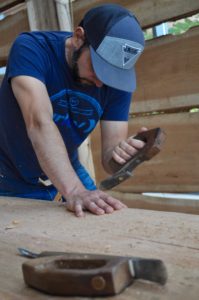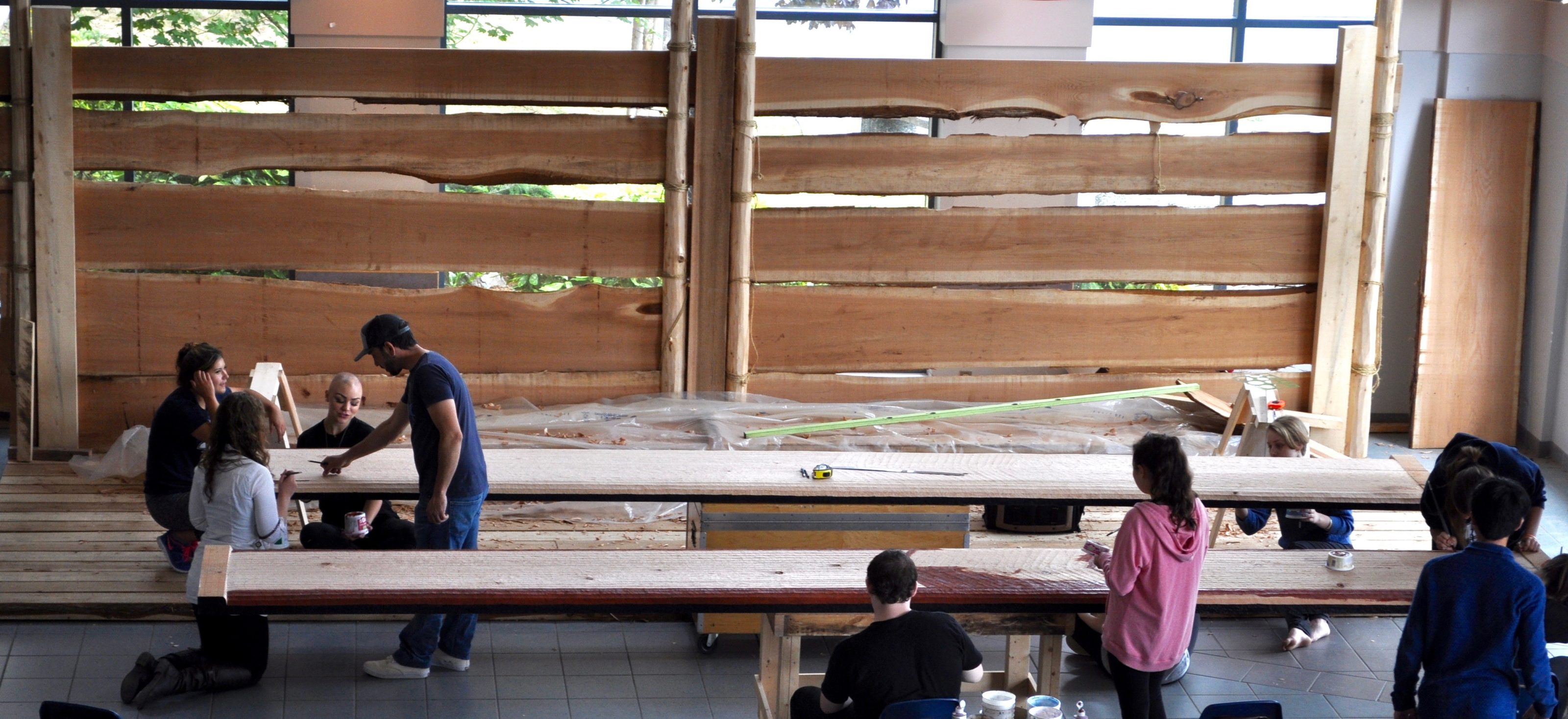Teaching with cedar
Story and photos by Mark Kiemele
 When students arrive at Ladysmith Secondary School (LSS) this September, they will immediately get a taste of the new Aboriginal-inclusive curriculum that’s been put in place at all BC schools this year.
When students arrive at Ladysmith Secondary School (LSS) this September, they will immediately get a taste of the new Aboriginal-inclusive curriculum that’s been put in place at all BC schools this year.
Stz’uminus artist John Marston has taken on a two-year task of creating a Coast Salish ‘feel’ inside the main entry doors in the form of traditional house posts, a welcoming figure, a longhouse structure and cedar weaving.
The project has generated excitement in the school and throughout the community with students helping to paint designs on panels, adult volunteers making steel brackets for the posts and the community donating money for the $75,000 project.
It’s all in support of a commitment to reconciliation on the part of both the artist, Stz’uminus nation and the greater Ladysmith community.
“Everyone was waiting for someone to start, someone to do something,” Marston said. “When they came and asked me to do a pole for the school, I thought I’d do more.”
Combining an artist’s talents with the skills of school staff and teachers in the project wasn’t the easiest of things, Marston admitted.
“There’s no spreadsheets or anything. We’re figuring it out as we go along and everyone has given me support.”
The project is aptly named nutsumaat syaays which means ‘working together as one’ in the Hul’qumi’num language.
Champions of the project range from the school’s principal Margaret Olsen and teachers Bill Taylor and Moira Dolen to Ladysmith’s longtime volunteering supremo Duck Paterson.
Also stepping up was Timberwest, which donated the 40-foot log from which the panels and figure are being made. A sawmill, located across Oyster Bay from the Stz’uminus #12 reserve cut the lumber. And the Artists in the Classroom organization gave $10,000 to kick-start the project.
Marston is pumped by the support from his nation and the Ladysmith community. “People have said ‘this has been needed for so long’ and this project has taken us to a place where we have started to have good conversations. Now other people own it, not just me.
“These are the first steps on the long road to reconciliation,” he said.
The panels will be installed over the summer. Then Marston will begin work on the welcome figure in his workshop overlooking the harbour in the building that also houses the Maritime Museum. It will get its finishing touches after being put in place in the school’s foyer.
Teacher Moira Dolen, who is also the school’s Aboriginal liaison, is clear about the long-term impact the project will have.
“This is going to transform the school and transform the environment here,” she said.
Donations
Donations are still needed to finish the project. More information from mdolen@sd68.bc.ca or by phoning Moira Dolen or Bill Taylor at 250-245-3043.
Calls to Action
The Truth and Reconciliation Commission issued its final report in 2015. It also delivered its Calls to Action – 94 ways in which Canadians can work to redress the legacy of residential schools and advance the process of reconciliation.
Several of them dealt with education at all levels including:
- We call upon the federal, provincial, and territorial governments, in consultation and collaboration with survivors, Aboriginal peoples, and educators, to: Make age-appropriate curriculum on residential schools, Treaties, and Aboriginal peoples’ historical and contemporary contributions to Canada a mandatory education requirement for K-12 students.
- We call upon the Council of Ministers of Education, Canada to maintain an annual commitment to Aboriginal education issues, including: Developing and implementing K-12 curriculum and learning resources on Aboriginal peoples in Canadian history, and the history and legacy of residential schools.






